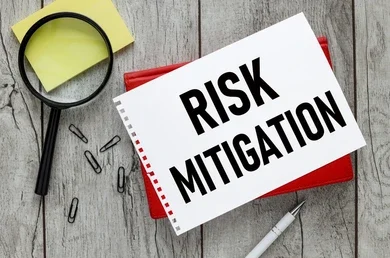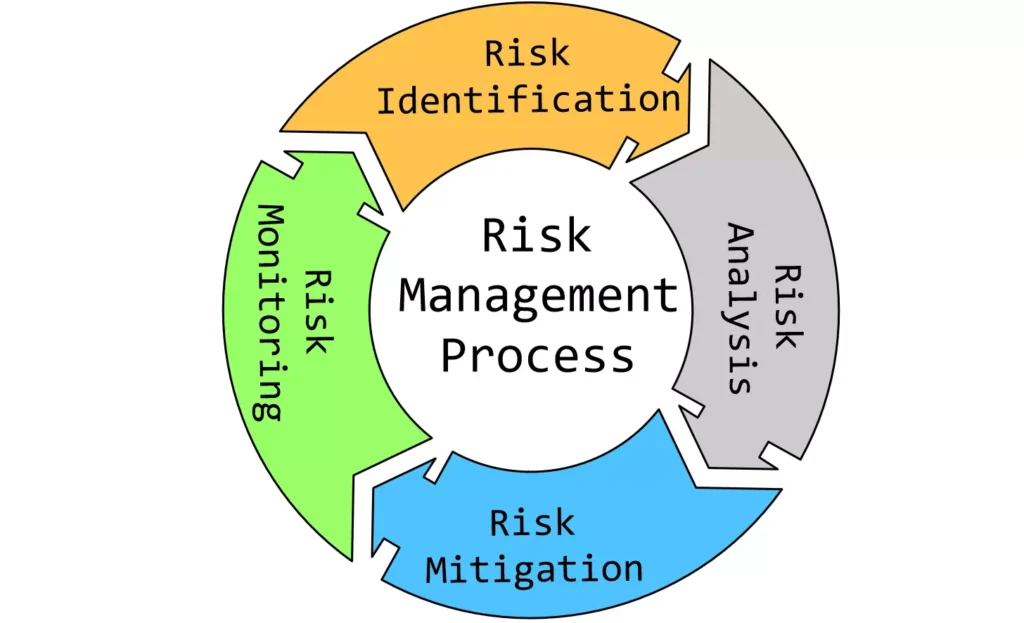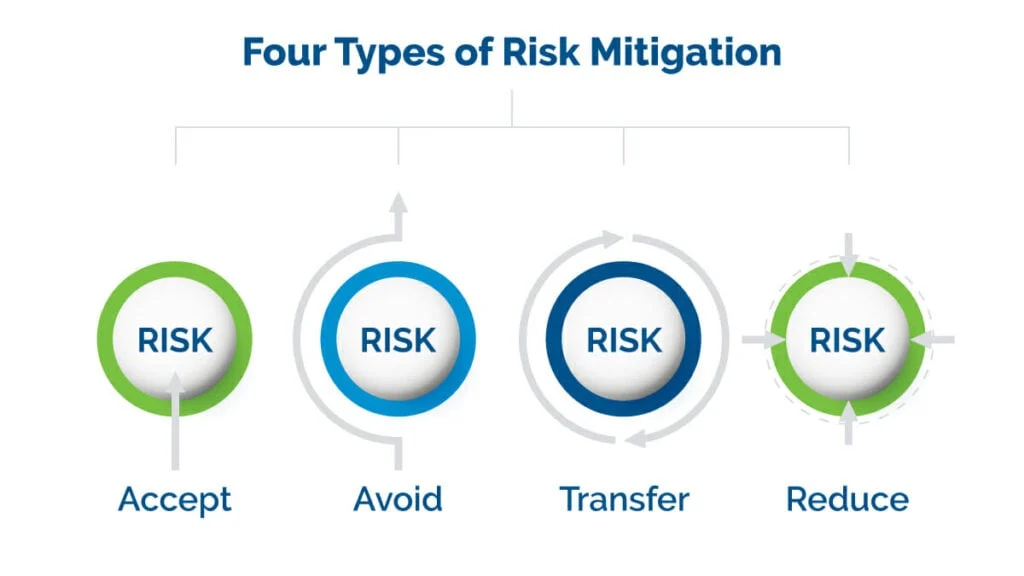Introduction to Risk Mitigation

Risk is an inseparable part of any business, project or organizational endeavor in a highly dynamic global environment. Between financial institutions struggling to deal with market uncertainty and tech firms that are grappling with cybersecurity issues, all industries have their array of possible risks. Proper management of these risks will not only dictate whether an organization survives or not but it will also dictate whether the organization is going to be self sustained in terms of survival and expansion. It is at this point that the risk mitigation becomes part of the strategic planning.
One of the main processes in the disciplines of risk management is risk mitigation. It entails recognizing threats that may arise, the probability and effects and formulating control mechanisms to mitigate, shift, or completely eradicate the risks. Contrary to risk avoidance, which aims at reducing risk by trying to avoid the risky behavior at all costs, mitigation recognizes the fact that some risk is unavoidable and it aims at reducing its adverse impacts.
By taking a holistic approach to risk mitigation strategies, organizations in a better position to retain operational stability, or safeguard their image and present themselves well following unexpected events. The survival is not the only effect: risk-conscious companies tend to perform better than their rivals due to the ability to make more informed decisions, encourage innovation within the harmless boundaries, and establish trust with stakeholders.
What Is Risk Mitigation?
Risk mitigation is at the most fundamental level, the act of reducing the effect or probability of adverse incidents that may lead to derailing of goals. It is a special branch of risk management, which pays special attention to practical measures to minimize the risks of exposure to injury. The risk management has a comprehensive cycle of the identification, assessment, planning, and monitoring of risk mitigation where the risk mitigation specially is the implementation of solutions to mitigate the risks to comfortable levels.
Mitigation understands that not every risk may be prevented or transferred. To take an example of a logistics company, it cannot get rid of weather-related delays, but it can create contingency routes and delivery buffers to mitigate the chances of late shipments. Likewise, a financial institution will not be able to prevent the global market changes but it can hedge its investments to mitigate the impact.
Mitigation of risks can be relevant to a wide range of areas: technical systems, financial activities, regulatory regulations, legal liability, environmental sustainability, or organizational culture. These are not merely asset protection and compliance efforts but how to be resilient, continuous and performance sustainable.
Risk Mitigation Process
Reducing risks is not an isolated one-time event but a systematized ongoing process that is incorporated in the greater context of risk management. Regardless of the nature of enterprise level threats or project level issues, organizations should adhere to a methodical procedure in order to minimize the adverse impact of uncertainty. This exercise usually involves 6 major steps which are: risk identification, assessment, prioritization, mitigation planning, implementation and monitoring.

Risk Identification
The identification of possible risks is the first and the most vital step in the process of mitigation. This is a process of being methodical in investigating every bit of operations, projects or strategies in order to identify weaknesses. The causes of risk can either be internal (e.g. process failures, human error) or external (e.g. economic shifts, natural disasters, changes in regulations).
Common methods for identifying risks include:
- Brainstorming sessions with cross-functional teams
- SWOT analysis (Strengths, Weaknesses, Opportunities, Threats)
- Historical data review to analyze past incidents
- Interviews and surveys with stakeholders or subject matter experts
- Risk checklists tailored to specific industries or activities
The outcome of this phase is a preliminary risk inventory a detailed list of potential risks across the organization or project.
Risk Assessment
Once risks have been identified then it is followed by determining their likelihood of occurrence and the degree of impact. The risk assessment may be qualitative or quantitative or both.
- Qualitative Assessment classifies each risk by low, medium and high which are used to determine the severity and likelihood of the risk. We use this best when we do not have hard data, or when risks are hard to measure.
- Quantitative Assessment calculates possible financial or operational losses using numbers, probabilities, or models (as with Monte Carlo simulations). It can be applied in making decisions based on data, particularly, in finance and engineering.
The main objective of risk assessment is to ascertain the amount of risk exposure that can also be represented in a risk matrix. This tool is used to plot risks in a grid according to their probability and magnitude to assist decision-makers to focus mitigation efforts.
Risk Prioritization
Risks are not always equally dangerous and an organization can rarely afford to mitigate all risks at the same time. Thus, the following step will be to rank risks in accordance with their overall threat level.
High priority Riskes of high likelihood and high impact are addressed immediately, and low priority risks can just be observed over time. Prioritization is used to make sure there is an efficient allocation of resources and that the most threatening threats are addressed properly.
At this point, many organizations maintain a risk register or risk log that is tracking the assessment, priority, owner, and current status of each risk.
Risk Mitigation Planning
After the evaluation of risks and prioritization of risk, now, it is time to formulate the specific mitigation strategies. The nature of the risk must be considered when formulating each strategy, which should contain:
- Action steps to reduce, eliminate, or transfer the risk
- Assigned responsibilities (risk owners)
- Required resources (financial, human, technological)
- Timeline and milestones
- Contingency plans, in case the primary mitigation efforts fail
For example, if the risk is a cybersecurity breach, the mitigation plan may include upgrading software, training staff on phishing scams, and subscribing to threat detection services.
This planning phase is also when you decide whether to avoid, reduce, transfer, or accept the risk a decision often based on a cost-benefit analysis.
Implementation of Mitigation Measures
Planning is nothing but doing. This is the implementation of mitigation strategies by using a process, technology or behavioral change. Key success factors for implementation include:
- Clear communication of the plan across all levels of the organization
- Leadership support and alignment with strategic goals
- Employee training and change management
- Performance monitoring tools to track effectiveness
Some risk responses may be technical (e.g., installing backup servers), while others may be procedural (e.g., updating safety protocols). The implementation stage also includes any investments or capital expenditures needed to execute the plan.
Monitoring, Review, and Adjustment
Risks do not remain in the same state they change with time, and must your mitigation strategies change with it. The constant monitoring is necessary to make sure that mitigation works and that the emerging risks are promptly detected.
Monitoring may involve:
- Key risk indicators (KRIs) or thresholds that trigger alerts
- Internal audits and compliance checks
- Regular risk review meetings
- Performance metrics to evaluate control effectiveness
When a mitigation strategy is not functioning, then it needs to be changed or renewed. This is a cyclical exercise where mitigation strategies are kept up to date and in line with evolving business conditions.
Risk monitoring becomes part of the decision-making and performance management systems in more mature organization. Most of this tracking can be automated by Enterprise Risk Management (ERM) systems using dashboards and analytics.
Integration with Enterprise Strategy
Risk mitigation should be part and parcel of business strategy and culture. Risk thinking must be incorporated in the strategic planning, performance measurement and resource allocation of organizations. Managers and leaders must be motivated to be not only targets oriented, but risk-conscious and responsible.
As well, risk mitigation is becoming an issue of governance, as boards and investors require the transparency of the process through which risks are identified, measured, and dealt with. Regulatory bodies in most industries want to see documented mitigation plans in case of cyber threats and environmental risks among others.
Types of Risk Mitigation & Strategies
Any risk mitigation plan can be based on the right choice of the strategy to deal with each of the identified risks. A risk cannot and will not be handled in a similar manner. Responsible reaction is based on many factors, including risk nature, its potential impact, risk appetite of the organization, cost effectiveness of controls and organizational strategic goals.
Risk mitigation strategies are of five major types that have different objectives and use in all of them: Avoidance, Reduction, Transfer, Acceptance, and Sharing. The success of the strategy or a blend of strategies can spell the difference between resilience and vulnerability.

Risk Avoidance
Risk avoidance is an avoidance that is carried out entirely by altering plans, objectives or procedures. The approach is appropriate in cases where the impacts of the risk are devastating and the organization finds the risk unfair or unbearable with the current capacity.
To illustrate this, when a firm is thinking of venturing into a politically volatile nation, it would not risk the risk and would instead go to a market that is more stable. Similarly, a software developer may shelve an untested, risky item to avoid system crashes or dissatisfaction by the users.
Benefits of Risk Avoidance:
- Eliminates the threat completely
- Reduces the need for complex controls
- Useful for high-impact, high-likelihood risks
Limitations:
- May lead to missed opportunities
- Can limit innovation and growth
- Not always feasible (some risks are inherent)
Avoidance is most appropriate in situations where the cost of failure far outweighs potential benefits.
Risk Reduction (or Risk Control)
The concept of risk reduction is the reduction of the probability or effects of a risk, but not its removal. This is the risk reduction most readily obtained, and may be accomplished by internal controls, process modifications, training or the implementation of technology.
Examples include:
- Installing fire detection and suppression systems to reduce fire damage
- Conducting regular security audits to minimize the chance of cyberattacks
- Providing employee safety training to reduce workplace injuries
- Using encryption and secure protocols to reduce data breach exposure
Benefits of Risk Reduction:
- Cost-effective and scalable
- Enhances resilience
- Improves operational efficiency
Limitations:
- Cannot completely eliminate risk
- May require ongoing investment and oversight
- Effectiveness can degrade over time without updates
Risk Transfer
Risk transfer is a process of keeping the risk off the financial or operational responsibility of the risk to another party. This is usually done by a contract, an outsourcing or insurance. Although the risk remains the same, the consequences are no longer shouldered on the shoulders of the initial party.
Examples include:
- Purchasing insurance policies to transfer financial losses from theft, property damage, or cyber incidents
- Outsourcing data storage to a third-party cloud provider who assumes certain liabilities
- Using supply chain contracts that include penalty clauses for non-performance
Risk transfer is particularly useful when dealing with risks that are difficult or expensive to control internally.
Benefits of Risk Transfer:
- Reduces financial exposure
- Allows specialization (e.g., hiring experts to handle certain risks)
- Offers legal protection when properly structured
Limitations:
- Transferred risk may still impact operations
- Contracts and insurance may not cover all scenarios
- May be costly or involve legal complexity
Risk transfer should always be backed by a thorough analysis of terms, conditions, exclusions, and liabilities in third-party agreements.
Risk Acceptance
Risk acceptance refers to an action of accepting that a risk exists and undertaking a deliberate decision on not to do anything to address the risk in the present moment. Such a strategy is suitable when mitigation cost is greater than the possible loss, or when the risk is perceived to have low impact or low probability of occurrence.
Examples:
- A start up firm can take the risk of temporary changes in the cash flow as it works on market penetration.
- Project team might take the risk of short software downtime provided that it is seen to be tolerable by the end users
Risk acceptance ought to be written and scheduled and not active. Usually, the risks which are accepted are reinforced with contingency strategies in instances where they occur.
Benefits of Risk Acceptance:
- Saves resources
- Encourages agility and fast decision-making
- Can be a rational choice in low-risk environments
Limitations:
- No safeguards if the risk does occur
- Can lead to complacency or underestimation
- Requires careful monitoring
Acceptance of risks is not a negligence but a strategic decision that has to be informed and followed.
Combining Strategies
In reality, risk mitigation is usually a combination of solutions. As an example, an e-commerce site may minimize risk by encrypting data (risk reduction), transfer risk with cyber insurance (risk transfer), and absorb low risk associated with user generated content (risk acceptance).
The key is to match each risk with the most appropriate mitigation strategy based on:
- Probability of occurrence
- Severity of impact
- Cost and feasibility of mitigation
- Strategic value and objectives
The key elements to this are a regular review and re-evaluation of these strategies to keep it in line with organizational objectives and evolving environments.
Risk Mitigation Control
Risk control mitigation is an important way of handling risks by diminishing the probability of such risks or minimizing the effect. In contrast to risk avoidance where the goals of the strategy are to avoid risks completely, risk control is based on the fact that some risks cannot be avoided and seeks to contain them to manageable levels.
This approach uses a combination of preventive actions to prevent risks and corrective actions to reduce harm in case risks come into being. Preventive controls may mean safety training, security, or routine equipments maintenance. Some of the corrective measures may include disaster recovery plans or backup systems which allow the quick recovery of incidents.
Technical controls (e.g. firewalls, sensors), procedural controls (e.g. protocols, standard operating procedures), and administrative controls (e.g. audits, training) all make up risk control mitigation towards risk defences. Suppose that a manufacturing facility lowers the risk of machinery failures by arranging the periodic maintenance of equipment and educating operators about the correct use of equipment.
It must be cost-effective: mitigation exercises must be matched between the risk reduction benefits and the costs. Also, the nature of risks changes and this is why organizations need to continually observe and revise their controls as a way of retaining their effectiveness.
Enterprise Risk Mitigation
Enterprise risk mitigation is a holistic process of risk identification, risk evaluation and control of risks that impact on an organization as a whole. In contrast to departmental or project-based, isolated risk management, enterprise risk mitigation considers risks in a global context and as such, it aligns the risks with the strategic objectives and overarching risk appetite of a company.
This is done through the formulation and execution of strategies that minimize the probability and effects of risks in different fields that are financial, operational, strategic, reputational, legal, and technological. The typical mitigation strategies are putting in place internal controls, investing in multiple projects, implementing effective cybersecurity systems, compliance programs and risk transfer through insurance or joint ventures.
The most important feature of enterprise risk mitigation includes incorporating risk management into the company culture and decision making. The commitment of the leadership, clear communication, and constant monitoring are needed to guarantee that risks can be detected in a timely manner and dealt with quickly.
Risk management software and risk dashboards (e.g., enterprise risk management) can be used to monitor the key risk indicators and offer real-time access to risk exposure. This allows making changes in advance and enhances the organizational resilience.
Conclusion
Risk mitigation is an essential part of well-developed planning and decision-making. Through the active detection and handling of possible threats, individuals and organizations are able to reduce disruption, decrease losses, and improve capability to fulfill goals. Also, whether it is avoidance, reduction, transfer, or acceptance, the right mitigation strategies can be practiced to create resilience and make operations run smoothly. A high emphasis on risk mitigation is a key means of resource protection in the rapidly changing and uncertain environment of today as well as a competitive advantage. Being an on-going process, it will have to be adjusted to the new conditions, so it is a crucial practice in any industry and sector.



